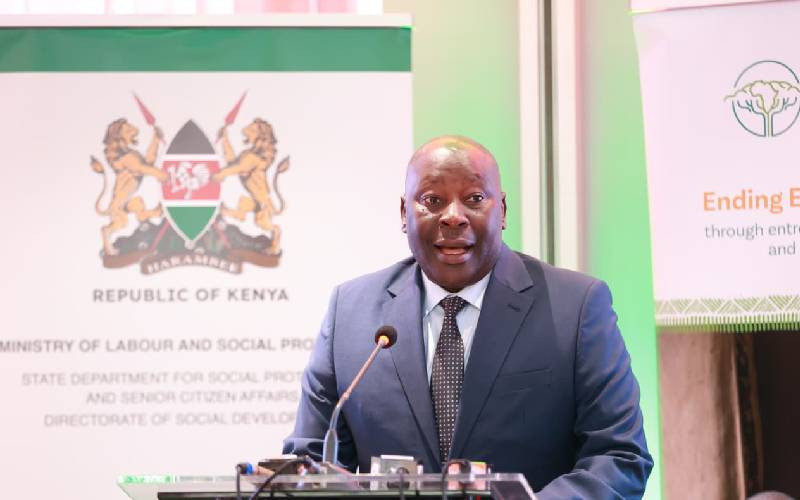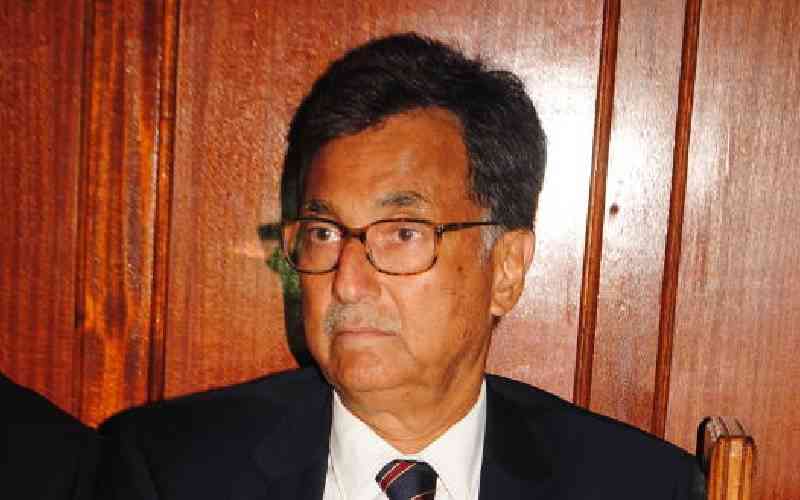
Kenya has unveiled a new plan to confront the number of citizens living below the poverty line, one of the most persistent challenges facing the country.
The Ultra-Poor Graduation Strategy 2025–2030, launched on Tuesday, seeks to lift the country’s most vulnerable households out of extreme poverty through a combination of cash transfers, economic inclusion programs, business training, and mentorship.
The initiative is a partnership between the State Department for Social Protection, Village Enterprise, and CHASM, bringing together government and civil society to tackle extreme poverty.
Speaking at the launch, Principal Secretary for Social Protection and Senior Citizen Affairs Joseph Motari emphasized that the strategy aligns with President William Ruto’s bottom-up economic transformation agenda.
PS Motari said that according to the Kenya Poverty Report 2022, 39.8 percent of Kenyans live below the poverty line, while 7.1 percent endure extreme poverty marked by chronic deprivation and exposure to recurring shocks.
“These numbers represent families struggling to secure daily meals, young people lacking economic opportunities, and communities trapped in cycles of vulnerability stretching across generations,” he said.
Motari noted that the government’s focus remains on empowering citizens to achieve sustainable livelihoods rather than relying on fragmented interventions.
The Ultra-Poor Graduation Strategy builds on earlier pilots by the government like the cash transfer programme that demonstrated encouraging results.
Motari explained that between 2019 and 2024, the economic inclusion program supported 15,000 households, resulting in significant increases in household assets, a 35 percent rise in savings, a drop in extreme poverty from 63 percent to 46 percent, and a marked reduction in food insecurity.
“Complementary programs such as Kuza Jamii have also boosted women’s decision-making power within families and communities,” he added.
Representatives from Village Enterprise and CHASM, key partners in designing the new strategy, emphasized the need for evidence-based and coordinated interventions.
Taddeo Muriuki of Village Enterprise said the collaboration between government and civil society remains essential for delivering lasting change.
“Our organization is currently supporting more than 25,000 Kenyan households through business grants, training, and mentorship,” he said.
“Ending extreme poverty requires a coordinated, evidence-based approach. We are supporting over 25,000 households in Kenya through training, business grants, and mentoring programs,” he added.
Stay informed. Subscribe to our newsletter
Beyond social protection programs, the government highlighted broader poverty-reduction initiatives, including subsidies that have lowered fertilizer costs, efforts that have improved national food production, and youth enterprise programs that have supported nearly 900,000 young people.
“The National Drought Management Authority continues to run the Hunger Safety Net Programme, which shields over 133,000 households in arid regions from food insecurity and climate shocks,” said PS Motari.
The newly launched strategy aims to unite these efforts under one coordinated national framework.
It proposes a structured, sequenced model that helps ultra-poor households build assets, strengthen resilience to climate change, access financial systems, and eventually achieve economic independence.
Motari noted that past beneficiaries of similar programs have managed to maintain improved incomes and living conditions long after completing the program, proving that graduation from poverty is possible when support is both targeted and sustained.







